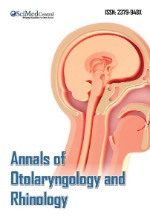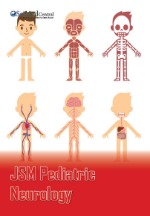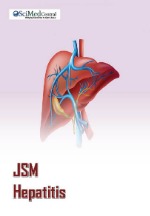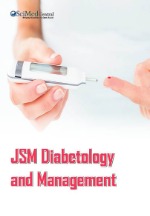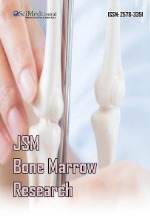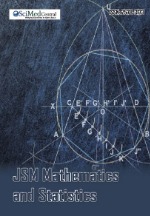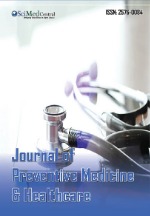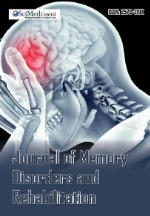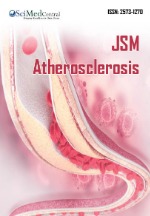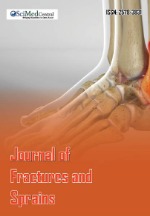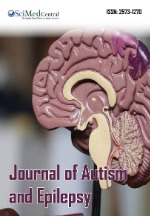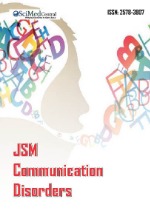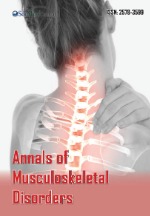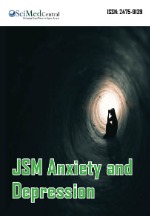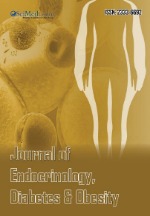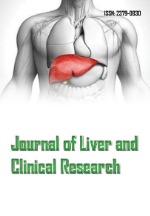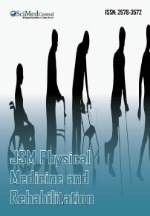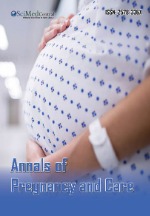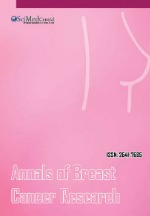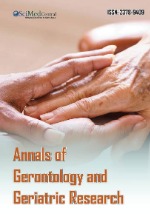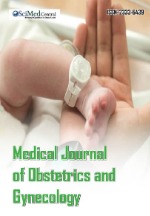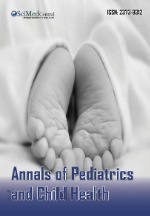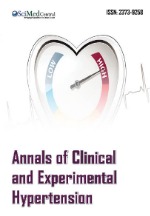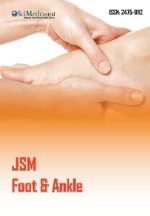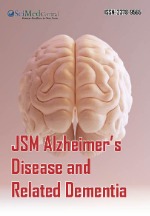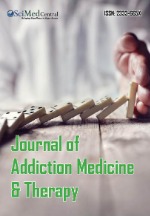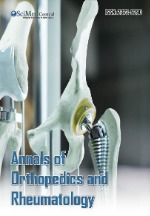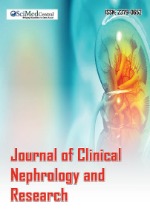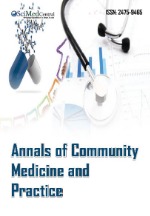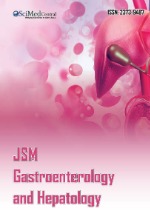Parenting Stress, Harsh Parenting, and Children
- 1. Department of Social Welfare, UCLA Luskin School of Public Affairs, USA
- 2. Department of Child, Youth and Family Studies, University of Nabraska-Lincoln, USA
Abstract
Parenting stress can lead to negative, coercive, and harsh parenting and these can have a negative and direct effect on children’s behavior. Using data from a subsample of unmarried black mothers and nonresident biological fathers with a focal 3-year-old child (N = 1,370) from the Fragile Families and Child Wellbeing Study, we tested a model linking economic hardship and nonresident fathers’ involvement in single mothers’ family life during children’s early childhood (age 3-5) to behavior problems in middle childhood (age 9) and early adolescence (age 15). We tested whether these associations differed by child gender. In general, results were consistent with our theoretical expectations, especially for boys. Economic hardship was linked indirectly to harsh parenting through mothers’ depressive symptoms and parenting stress, both of which were related directly to harsh parenting. Fathers’ involvement was associated directly with reduced economic hardship and reduced parenting stress for mothers at child’s age 3 - 5, and reduced levels of harsh parenting at child’s age 9, for mothers of boys, but only with reduced economic hardship for mothers of girls. Harsh parenting during middle childhood, in turn, was associated directly and positively with behavior problems for both genders at age 9. Problem behaviors at age 9 predicted adjustment problems at age 15. Implications of these findings for prevention and intervention efforts and future research are considered.
Keywords
• Harsh parenting
• Children’s behavior
Citation
Jackson AP, Choi JK (2018) Parenting Stress, Harsh Parenting, and Children’s Behavior. J Family Med Community Health 5(3): 1150.
INTRODUCTION
Parenting stress can lead to negative, coercive, and harsh parenting [1,2] and these can have a negative and direct effect on children’s behavior [3,4]. Indeed, there is abundant evidence relating negative and coercive parenting to conduct problems for economically disadvantaged mostly white children [5-7], as well as evidence that there may be important ethnic, race, and class differences in parenting behavior [8-10]. Some note, for example, that low-income black mothers (few studies include fathers) are somewhat more likely to spank their children, sometimes in anger and sometimes not [11]. Others have described discipline as harsh if the parent spanks, slaps, or yells (routinely and usually in anger) at the child [12]. In addition, a number of studies have found links between stressful family processes in children’s preschool years, harsh parenting, and later conduct problems [5-7]. Yet, despite this evidence, few studies have explored such relations in single-parent black families. The purpose of this study is to contribute to our understanding of how parenting stress influences children in families headed by single black mothers. This is important because these families are disproportionately poor, and poverty diminishes the quality of parenting due to persistent daily stressors. These circumstances are associated with a number of negative outcomes for young black children [13,14] including deficits in cognitive and behavioral functioning, emotion regulation and impulse control that persist for some children into adulthood [15].
Although most research on the effects of stress in the parenting role and outcomes for children has focused on white married-couple families [3,16,17] emerging evidence on family processes in single-parent black families suggests that nonresident fathers’ involvement is associated with better socioemotional and behavioral child developmental outcomes [18-20]. This is consistent with prior research on the negative effects of father absence showing that children growing up in households without the involvement of both biological parents are at greater risk for negative developmental and well-being outcomes than their counterparts who grow up in households in which both biological parents are involved [21-23]. Black children are over-represented in such households [24,25]. They are twice as likely as all other children to grow up in households without the involvement of biological fathers [26,27].
This study focuses on a cohort of low-income single black mothers with a focal child from age 3 to age 15, and their experiences with economic hardship, parenting stress, and the children’s nonresident biological fathers. Using data from the Fragile Families and Child Wellbeing Study, we test whether and how mothers’ stress in the parenting role early on affects their parenting and whether nonresident fathers’ involvement, in turn, affects child socioemotional development and behavior problems over time. We separated children by gender for these analyses because boys and girls may be differently affected by aspects of family conflict that include harsh and coercive parenting [28,29].
This work is informed by an integration of two theoretical frameworks: [28] family stress model and [30], person-process-context model, both of which posit that psychological stress associated with economic hardship disrupts parenting. We expected that mothers’ economic hardship early on would be associated with negative and harsh parenting through its effects on their psychological well-being and parenting stress and, through these, the children’s adjustment subsequently in middle childhood and early adolescence. We expected that positive involvement by nonresident fathers would serve as a psychological resource for mothers with respect to the influences of maternal parenting on preschool children’s adjustment over time. Our conceptual model and a test of its adequacy follow.
Economic Hardship, Parenting Stress, Harsh Parenting, and Child Adjustment
Figure (1) provides an overview of our conceptual model.

Figure 1 Conceptual Model.
It begins with the mothers’ economic hardship and proposes that it will be related directly to maternal depressive symptoms and parenting stress (our measures of psychological functioning). The association between economic hardship and parental psychological well-being is well documented. Studies have consistently documented the association between economic pressure and psychological distress, and the relationship between the latter and less optimal parenting, such that parents who experience economic stress display less nurturance and more harshness in their responses to their children [28,31,32]. In addition, numerous studies have found links between and among depressive symptoms, parenting stress, and negative parenting [33]. Based on this evidence, economic hardship, in our model, is proposed as a key mechanism through which financial pressures influence mothers’ psychological well-being in the children’s preschool years. In sum, Figure (1) shows paths from economic hardship to depressive symptoms and parenting stress early on [34]. From the literature on psychological distress and parenting and the literature just reviewed, moreover, we expected higher levels of depressive symptoms to be associated with higher levels of parenting stress and each of these, in turn, to be associated directly with the quality of parenting and, thereby, to influence child developmental outcomes over time; i.e., into children’s middle childhood (age 9) and early adolescence (age 15). We expected problem behaviors at age 9 to predict such behaviors at age 15. These hypothesized relations are consistent also with the early work of Patterson and his colleqgues [35], who proposed that stressful family circumstances have developmental consequences for children, especially young boys, through their disruptive influences on parenting [28].
The second phase in our conceptual model concerns the associations among nonresident fathers’ involvement, mothers’ economic hardship and parenting stress in the preschool years (age 3-5), mothers’ harsh parenting in the children’s middle childhood (age 9), and the influence of these on behavior problems both concurrently and longitudinally at ages 9 and 15. The paths from fathers’ involvement, a latent variable with three indicators (mothers’ reports of his money provided for the child, amount of time spent with the child, and activities engaged in with the child), hypothesize that the level and quality of nonresident fathers’ involvement will be related directly to reductions in mothers’ economic hardship, parenting stress, and harsh parenting; and indirectly to fewer child behavior problems in middle childhood and early adolescence. These expectations are supported by the evidence linking fathers’ involvement to beneficial outcomes for mothers [18-20,36] and children [37]. We test the adequacy of our model in the analyses that follow.
METHOD
Data and sample
The Fragile Families and Child Wellbeing (FFCW) Study is a national longitudinal study designed to examine the characteristics of unmarried parents, the relationships between them, and the consequences for children. The study follows a sample of mothers, fathers, and children in 20 U. S. cities with populations of 200,000 or more. Baseline interviews with mothers and fathers were conducted shortly after their child’s birth between 1998 and 2000 [38]. Follow-up interviews were conducted at years 1, 3, 5, 9, and 15, from 1999 to 2017. We used survey interviews with mothers at time 3, time 5, time 9, and time 15, when the focal children were 3, 5, 9, and 15 years old, respectively. Among 4, 898 households in the longitudinal data set 740 single black mothers with young boys and 628 with young girls (N = 1,370) were selected for the present study. Mothers who were married to, lived together with, or were romantically involved with their child’s father were excluded. Teenage mothers aged 17 or younger and mothers who had never been poor (whose annual income was above 100% of the federal poverty threshold each year) were also excluded.
As shown in Table (1),
Table 1: Demographic Characteristics and Socioeconomic Status (N = 1,370).
| Variables | Boys | Girls | Difference | ||
| n | % | n | % | p | |
| Mother’s Age | 740 | 628 | |||
| 19 or younger | 22.0 | 18.5 | .096 | ||
| 20 – 24 | 45.3 | 42.2 | |||
| 25 – 29 | 18.8 | 24.0 | |||
| 30 – 39 | 12.7 | 13.7 | |||
| 40 or older | 1.3 | 1.6 | |||
| (Mean) | 740 | (23.7) | 628 | (24.1) | .140 |
| Mother’s Education | 740 | 628 | |||
| Some high school or less | 1.5 | 1.8 | .356 | ||
| High school diploma or GED | 33.5 | 38.2 | |||
| Some college or 2-year degree | 48.9 | 37.4 | |||
| Bachelor’s degree | 21.2 | 21.2 | |||
| Graduate school or higher | 1.9 | 1.4 | |||
| Employment Status | 740 | 628 | |||
| Employed | 93.1 | 94.4 | .317 | ||
| Welfare Receipt | 738 | 628 | |||
| Recipient | 59.1 | 54.3 | .068 | ||
| Annual Income | 740 | 628 | |||
| $4,999 or less | 41.1 | 44.4 | .458 | ||
| $5,000 – 9,999 | 21.4 | 18.6 | |||
| $10,000 – 29,999 | 18.5 | 19.3 | |||
| $30,000 or higher | 19.1 | 17.7 | |||
| (Mean) | 601 | ($6,952.8) | 521 | ($7,027.8) | .180 |
among the sampled mothers: Over 40% were 20 to 24 years old; on average, at the focal child’s birth, those with a boy were 23.7 years old, and those with a girl were 24.1; 37.4% of those with a girl and 48.9% of those with a boy had some education beyond high school. While most of the mothers reported being employed; i.e., 93.1% and 94.4%, respectively, for those with a boy and those with a girl, 59.1% and 54.3%, respectively, reported being welfare dependent. The average reported annual income was $6,952.8 and $7,027.8 (S.D. = $7,719.8), respectively, for mothers with a boy and those with a girl. None of these differences in demographic and socioeconomic characteristics were statistically significant. Roughly two-thirds of the sample reported an annual income of $9,999 or less.
Measures
The description of the measures proceeds across the constructs depicted in Figure (1), from left to right, starting with economic hardship. Alpha coefficients were obtained for scales with three or more indicators. When calculating the mean value on scales, items were reversed as necessary so that a higher score indicates more of the attribute named in the label.
Economic hardship at times 3 and 5-Economic hardship was measured by a 10-item scale (ranging from 0 = no to 1 = yes) that asked mothers about their financial difficulties during the 12 months prior to the interview. Sample questions included: “Did you go hungry?” “Did you not pay the full amount of rent or mortgage payment?” “Did you not pay the full amount of a gas or electric bill?” “Was service disconnected by the telephone company because payments were not made?” “Did you borrow money from friends or family to help pay bills?” “Did you move in with other people even for a little while because of financial problems?” The Cronbach’s alpha was .63 at time 3 and .67 at time 5.
Maternal depressive symptoms at times 3 and 5-Depressive symptoms were measured by a scale drawn from the Composite International Diagnostic Interview Short Form, Section A [39]. This 7-item scale examined whether respondents had feelings of dysphoria (depression) or anhedonia (inability to enjoy what is usually pleasurable) in the past year that lasted for two weeks or more, and if so, whether the symptoms lasted most of the day and occurred every day of the two-week period. If the latter were so, respondents were then asked to answer more specific questions about losing interest in hobbies, job, and activities, feeling tired, change in weight, trouble sleeping, trouble concentrating, feeling worthless, and thinking about death. Responses were coded “1 (yes) or 0 (no).” The Cronbach’s alpha was .90 at time 3 and time 5.
Maternal parenting stress at times 3 and 5-Parenting stress was assessed by a 4-item scale adapted from the Early Head Start Study. Mothers were asked to indicate on a 4-point scale (ranging from 0 = strongly disagree to 3 = strongly agree) the extent to which they agreed or disagreed with statements such as the following: “Being a parent is harder than I thought it would be,” “I feel trapped by my responsibilities as a parent,” “taking care of my child (ren) is much more work than pleasure,” and “I often feel tired, worn out, or exhausted from raising a family.” The Cronbach’s alpha was. 64 at time 3 and .66 at time 5.
Harsh parenting at time 9- Harsh parenting was measured by 14 questions adapted from three subscales (i.e., non-violent discipline, physical assault, and psychological aggression) from the Parent Child Conflict Tactics Scale [40]. Regarding nonviolent discipline, physical assault, and psychological aggression, mothers were asked to indicate on an 8-point scale (ranging from 0 = never happened to 7 = more than 20 times) if they had done any of the following in the past year: explained why something was wrong; put their child in “time out”; shook, hit, yelled at, spanked, swore at, threatened to spank, slapped, taken away privileges, or pinched their child; call their child dumb, and more. The Cronbach’s alpha was .80.
Fathers’ involvement (Fathering) at times 3 and 5- Fathers’ time, money, and activities were assessed by three scales asking mothers to indicate (1) how many days in the past 30 days the father had seen the child (0 to 30 days), (2) how often the father bought clothes, toys, medicine, food, and anything else for the child, and (3) how often the father sang songs, showed affection to the child, told the child that he loves him or her, read stories to the child, told stories to the child, played inside with the child, went out to eat with the child, assisted the child with eating, put the child to bed. While fathers’ time was a single-item scale, fathers’ money was a five-item, 4-point scale (ranging from 0 = never to 3 = often) that achieved the Cronbach’s alpha of .89 at time 3 and time 5; fathers’ activities was an 8-point scale (ranging from 0 to 7 days a week) that achieved Cronbach’s alphas of .91 at time 3 (10 items) and .92 at time 5 (8 items).
Behavior problems at times 9 and 15. Behavior problems were assessed by the Child Behavior Checklist/6-18 [41]. This scale has 111 items that comprise the following subscales: aggressive behavior, somatic complaints, and thought problems. Mothers were asked to choose one of a range of possible answers on a 3-point scale (ranging from 0 = not true to 2 = often or very true) that asked about the frequency or intensity of behavior problems such as the following: “child acts too young for his or her age,” “child fails to finish things he or she starts,” “child can’t concentrate or can’t pay attention for long,” “child argues a lot,” “child is cruel, bullies, or shows meanness to others,” “child is disobedient at home/school.” The Cronbach’s alphas at time 9 and time 15 were .95 and .99, respectively.
RESULTS
Descriptive analyses
Means, standard deviations, and correlations between variables are shown in Table (2).
Table 2: Correlation Coefficients (N = 1,370).
| Variables | 1 | 2 | 3 | 4 | 5 | 6 | 7 | 8 | 9 | ||||||||
| 1. Fathers’ time T3-T5 | |||||||||||||||||
| 2. Fathers’ money T3-T5 | .61 | *** | |||||||||||||||
| 3. Fathers’ activities T3-T5 | .45 | *** | .47 | *** | |||||||||||||
| 4. Economic hardship T3-T5 | -.17 | *** | -.14 | *** | −.16 | *** | |||||||||||
| 5. Depressive symptoms T3-T5 | -.08 | ** | -.09 | ** | −.10 | ** | .33 | *** | |||||||||
| 6. Parenting stress T3-T5 | -.07 | * | -.05 | −.14 | *** | .21 | *** | .25 | *** | ||||||||
| 7. Harsh parenting T9 | -.04 | -.07 | * | −.17 | *** | .17 | *** | .15 | *** | .17 | *** | ||||||
| 8. Behavior problems T9 | -.03 | -.09 | ** | −.07 | .12 | *** | .14 | *** | .23 | *** | .31 | *** | |||||
| 9. Behavior problems T15 | -.08 | -.07 | * | −.13 | *** | .10 | *** | .11 | *** | .19 | *** | .25 | *** | .43 | *** | ||
| Statistics | |||||||||||||||||
| n | 986 | 1,195 | 807 | 1,339 | 1,257 | 1,311 | 963 | 1,072 | 1,125 | ||||||||
| Minimum | 0 | 0 | 0 | 0 | 0 | 0 | 0 | .0 | .0 | ||||||||
| Maximum | 30 | 3 | 7 | .8 | 1 | 3 | 4.8 | 1.8 | 1.5 | ||||||||
| Mean | 9.4 | 1.0 | 2.4 | .2 | .2 | 1.3 | 1.3 | .2 | .3 | ||||||||
| S.D. | 10.2 | .9 | 1.7 | .1 | .3 | .6 | .9 | .2 | .3 | ||||||||
| Skewness | .9 | .4 | .2 | 1.1 | 1.0 | .2 | .8 | 2.8 | 1.6 | ||||||||
| Kurtosis | 2.4 | 1.8 | 2.1 | 4.1 | 2.3 | 2.6 | 3.4 | 17.4 | 5.8 |
Greater maternal parenting stress at times 3 and 5 were associated concurrently, as expected, with mothers’ greater depressive symptoms and, subsequently, with mothers harsher parenting at times 9 and 15, when the children were 9 and 15 years old. Harsh parenting was associated, in turn, with a greater share of behavior problems among 9- and 15-year-old children. All three of the father involvement variables—amount of time, money, and activities for and with the child—early on were associated negatively and concurrently with mothers’ economic hardship and depressive symptoms. In addition, fathers’ monetary contributions and activities with the children in the preschool years were associated with more positive maternal parenting (less harshness) and better child adjustment over time in middle childhood and early adolescence. These results portended a degree of promise for the proposed conceptual model, although the amount of time (contact) fathers spent with children at times 3 and 5 was not associated significantly with harsh maternal parenting and the children’s behavioral adjustment at age 9 and age 15. This was unexpected.
Model testing
Our preliminary analyses were conducted using STATA 14.2/SE [42]. The final structural equation models with a latent variable were performed using the MPlus 7.4 [43]. The portion of missing data for our measures was 16.6%, on average, and ranged from .01% (child’s gender) to 41.1% (fathers’ activities with the child). We investigated the missing data mechanism using [44] Missing Completely at Random (MCAR) test [45] and found that the sampled data were not missing at random (MNAR: χ2 = 1,008.2; d.f. = 466; p < .001). A Markov chain Monte Carlo (MCMC) algorithm (see Scheffer, 2002) was used to impute enough values to make the missing data pattern monotone. In doing so, imputations were generated using two chains, 20 imputed data sets and 10,000 fixed iterations. Before examining the estimates, we tested the closeness of our conceptual model to the set of actual data using posterior predictive checking [46,47]. The final models with 33 degrees of freedom produced negative values for the lower limit of the 95% confidence interval (i.e., -24.7 and -8.1 for boys and girls, respectively) and a posterior predictive p-value greater than .05 (i.e., .410 and .101 for boys and girls, respectively), indicating that the models fit the data well.
Final models
The model depicted in Figure (2) provides the standardized parameter estimates for boys;

Figure 2 Structural Equation Model for Boys (N = 734).
that depicted in Figure (3) provides similar results for girls.

Figure 3 Structural Equation Model for Girls (N = 618).
For these analyses, measures at times 3 and 5 were averaged to produce composite scores (T3-T5). As shown in Figure (2), the paths from economic hardship to depressive symptoms (ß = .36, p < .001) and parenting stress (ß = .09, p < .05) for mothers with a focal boy child are consistent with the expected effects, indicating that economic hardship is associated with higher levels of depressive symptoms and parenting stress, which in turn exhibit the expected positive relationships to harsh parenting (ß = .16, p < .001 and ß = .17, p < .001, respectively). Figure (2) shows, moreover, that depressive symptoms have the expected positive relationship to parenting stress (ß = .20, p < .001), indicating that mothers with more depressive symptoms experienced greater concurrent parenting stress. Parenting stress early on, in addition to its direct relationship to harsh parenting at time 9, was related directly also to boys’ behavior problems at time 9 (ß = .17, p < .001). Figure (2) shows paths from the latent construct of fathers’ involvement fathers’ time (contact) with the child (ß = .75, p < .001), money for the child (ß = .81, p < .001), and activities with the child (ß = .59, p < .001) to maternal economic hardship, parenting stress, and harsh parenting in the expected directions. Inspection of the structural parameters indicates that fathers’ involvement is associated with reduced economic hardship (ß = -.20, p < .001) and reduced parenting stress (ß = -.10, p < .01) concurrently, among mothers with a focal boy child, and reduced harsh parenting (ß = -.13, p < .01) over time in the children’s middle childhood. Harsh parenting at time 9, in turn, exhibits the expected positive relationship to boys’ behavior problems at age 9 (ß = .29, p < .001) and age 15 (ß = .13, p < .01). The path from the latter to behavior problems at age 15 indicates that boys’ problematic adjustment in middle childhood predicts similar problems in early adolescence, as expected. The standardized parameter estimates for girls are depicted in Figure (3). These results are similar to those for boys in most respects, except for two paths; that from fathers’ involvement to mothers’ parenting stress (ß = .01, p > .05), and that from fathers’ involvement to mothers’ harsh parenting (ß = -.04, p > .05). Those relationships are not significant; fathering is associated directly only with reduced economic hardship (ß = -.22, p < .001). Given the correlational analyses, these results are not surprising, but they were not expected. It is noteworthy, nevertheless, that fathers’ involvement, regardless of the child’s gender, predicts less economic hardship for mothers. Theoretically, our model proposed that economic hardship is a key mechanism through which financial pressures have developmental consequences for children through their disruptive influences on parenting. Our results are, for the most part, supportive of this expectation.
Table (3) shows,
Table 3: Decomposition of Direct, Indirect, and Total Effects (N = 1,370).
| Outcome | Predictor | Boys | ||||||||||||
| Direct | Indirect | Total | Direct | Indirect | Total | |||||||||
| Behavior problems T15 | Behavior problems T9 | .43 | *** | *** | .43 | *** | .35 | *** | *** | .35 | *** | |||
| Harsh parenting T9 | .13 | ** | .13 | *** | .25 | *** | .14 | ** | .09 | *** | .23 | *** | ||
| Parenting stress T3-T5 | .11 | *** | .11 | *** | .09 | ** | .09 | *** | ||||||
| Depressive symptoms T3-T5 | .06 | *** | .06 | *** | .04 | *** | .04 | ** | ||||||
| Economic hardship T3-T5 | .03 | *** | .03 | *** | .03 | 03 | *** | |||||||
| Fathering T3-T5 | -.05 | ** | -.05 | ** | -.01 | −.01 | ||||||||
| Behavior problems T9 | Harsh parenting T9 | .29 | *** | .29 | *** | .26 | *** | .26 | *** | |||||
| Parenting stress T3-T5 | .17 | *** | .05 | ** | .22 | *** | .19 | *** | .03 | .22 | *** | |||
| Depressive symptoms T3-T5 | .09 | *** | .09 | *** | .07 | *** | .07 | *** | ||||||
| Economic hardship T3-T5 | .05 | *** | .05 | *** | .06 | *** | .06 | *** | ||||||
| Fathering T3-T5 | -.07 | *** | -.07 | *** | .02 | −.02 | ||||||||
| Harsh parenting T9 | Parenting stress T3-T5 | .15 | ** | .15 | ** | .10 | * | .10 | * | |||||
| Depressive symptoms T3-T5 | .16 | ** | .03 | ** | .19 | *** | .08 | * | .02 | .11 | * | |||
| Economic hardship T3-T5 | .08 | *** | .08 | *** | .05 | ** | .05 | ** | ||||||
| Fathering T3-T5 | -.13 | ** | -.03 | ** | -.16 | ** | -.04 | -.01 | -.05 |
moreover, that while parenting stress at time 3-5 and harsh parenting at time 9 are associated directly with behavior problems for boys and girls at age 9, all of the other variables in the model antecedent to the child outcome are related significantly and indirectly to child behavior problems for boys at both time points; i.e., ages 9 and 15; for girls, this also is so, except for some, but not all, aspects of fathering. Consistent with the theoretical expectation, in sum, our results suggest that economic hardship early on yields more negative, coercive, and harsh parenting longitudinally through the meditational effects of depressive symptoms and parenting stress in the preschool years for some low-income, single-parent, black families.
REFERENCES
23. Kim HS. Consequences of parental divorce for child development. Am Sociol Rev. 2011; 76: 487-551.
24. Hamilton BC, Martin JA, Ventura SJ. Birth: Preliminary data for 2010, 2011. 2010.
26. Cheadle JE, Amato PR, King V. Patterns of nonresident father contact. Demography. 2010; 47: 205-225.
27. Livingston G, Parker KA. A tale of two fathers: more are active, but more are absent. 2011.
42. StataCorp. Statistical Software: Release 14. College Station, EX: StataCorp. LP. 2015.


